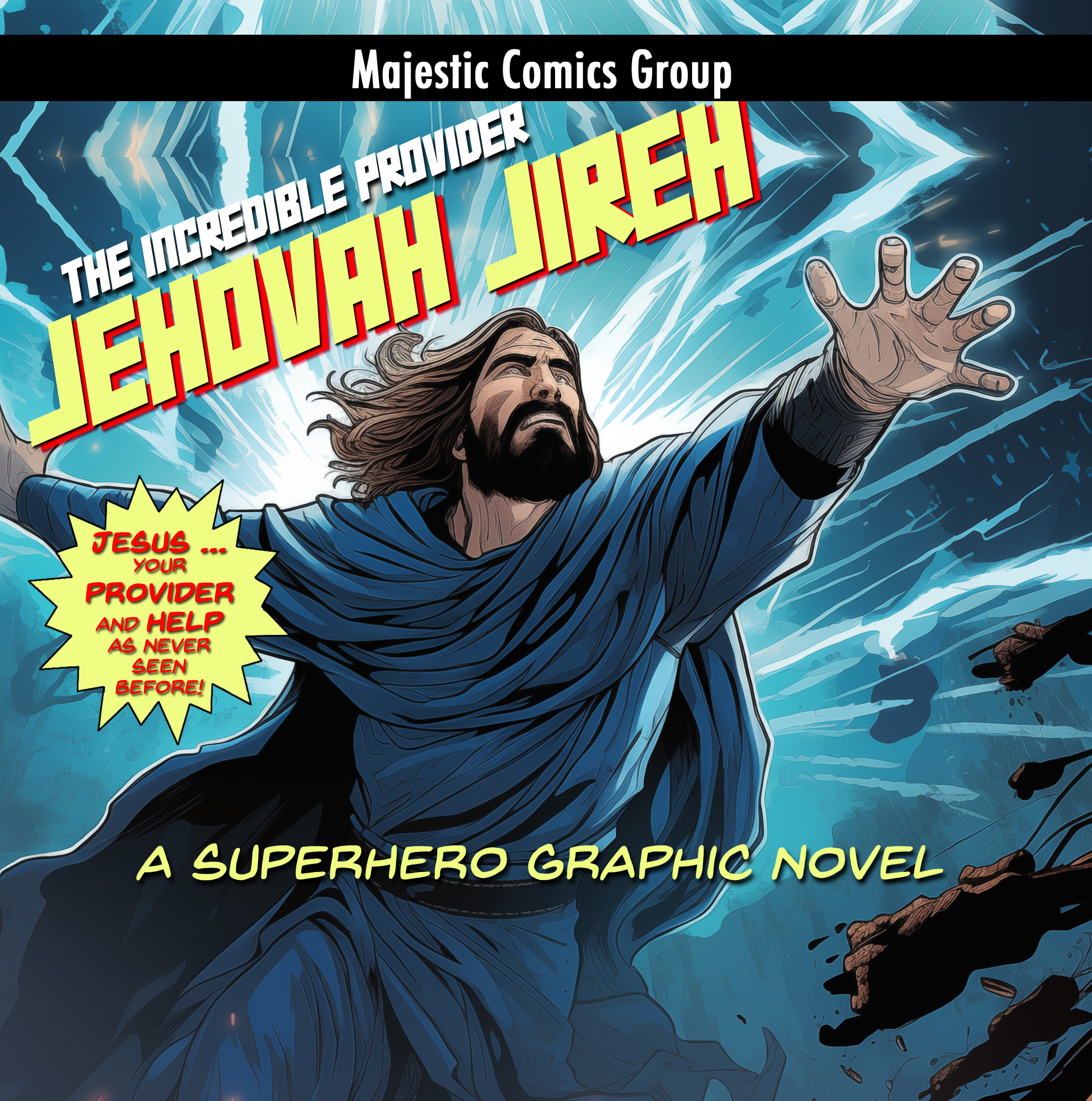The Dos and Don’ts to Dialogue Tags
Reality Coaching for Writers
Catch A Vision of Where Your Writing Can Take You
Reality Coaching for Writers
Jehovah Jireh: The Incredible Provider

Order directly from our book distributor, Ingram, and receive a FREE Advance Review ebook copy of our next book in the Majestic Comics Group series.
Jesus, your provider and help, as never seen before! A Superhero Graphic Novel for those who seek provision, protection, and purpose – who desire shelter and security, healing, health, and wholeness.
See how Jesus lifts us from pits of despair to places of blessings. Experience his joy and be set free to live his will to its fullest. Deepen your faith in the goodness of God. Expect your Lord to do the impossible. Read the words of Jesus and believe that he wants his best for you.
Is Jesus too good to be true? No! Though rich, he became poor, so that we might share in his treasures. If we humble ourselves before God and trust in his ways, words and will, we will see our Lord and King work in and through us to bless others.
Jesus grants second, third, and forever chances, so don’t lose heart. Jesus wants more for you than you can imagine. Believe his words and be encouraged.
“If you believe and do not doubt, you can say . . . and it will be done.” (Matthew 21:22)
“If you believe . . . you will receive whatever you ask for in prayer.” (Matthew 21:22)
“If you have faith as small as a seed, nothing will be impossible for you.” (Matthew 17:20-21)
“To those who ask, my Father in heaven desires to give you good gifts.” (Matthew 6:11)
“As you have believed, so it will be done for you.” (Matthew 8:13)
This is not the wealth and health prosperity gospel preached by some but the pure Good News Jesus gave to all. Abundance in Jesus is all that we need for each day. Provision in Jesus is contentment, joy, peace, work with purpose, and HIS presence in our lives.
Come. Taste and see that God is good.
The Jesus Messages in this book were first presented to the underserved in Moore Square Park, Raleigh, North Carolina. Proceeds from the sale of this book go to helping the underserved to enjoy the abundant life Jesus promised. Learn more about our ministry at Christ’s Church at Moore Square: mooresquarechurch.org.
Are You Writing Text Bricks?
Reality Coaching for Writers
Are you giving readers text bricks? In this episode we’ll discuss how text bricks create:
* Reader Fatigue
* Lack Clarity
* Reveal Poor Content Organization
* Offer Overwhelming Information
* Reduced Engagement
We’ll also give you three tips for how to turn text bricks into memorable moments.
In this episode of Reality Coaching for Writers, we discuss the issue of writing text bricks. Text bricks are long passages of text that lack white space and can be overwhelming for the reader. In writing, we want to prevent “fire hosing” or “text bricking” which happens when too much information is presented at once, making it difficult for the reader to grasp and retain the main points.
As writers, it’s crucial to keep the target reader in mind, ensuring that the information presented is not excessive or extraneous. If your target reader loves long, detailed passages, then text bricks may be fine. If you’re writing for a younger audience (YA and middle grade) then shorter, smaller “bricks” may be preferred.
To address the challenge of creating engaging scenes, especially when a character is isolated, the use of inner dialogue or a playful back-and-forth conversation in the character’s mind can be effective. This technique provides a break from text bricks and keeps the reader engaged.
Humor plays a significant role in both fiction and non-fiction. It serves as a tool to relax the reader and deliver information effectively. Incorporating humor, especially self-deprecating humor, helps readers connect and engage with the material.
When editing and dealing with text bricks, be open to cutting out unnecessary parts — of flipping those passages into dialogue between characters. Editors may suggest removing certain blocks of text, and writers should consider if those portions truly contribute to the story or message. The key is to maintain a balance between providing information and ensuring an engaging reading experience.
Finally, writers should be willing to defend their choices when it comes to keeping certain elements in their writing. It’s crucial to keep the writer’s voice.
Eddie Jones and Diana Flegal offer personalized coaching for writers.
For more information, check out: https://writerscoach.us